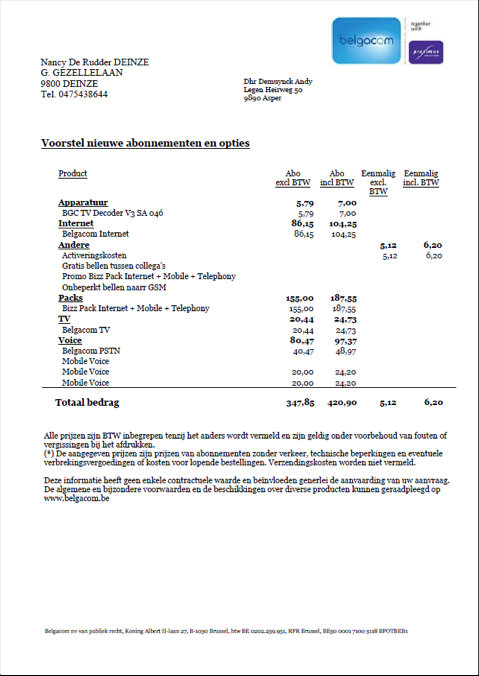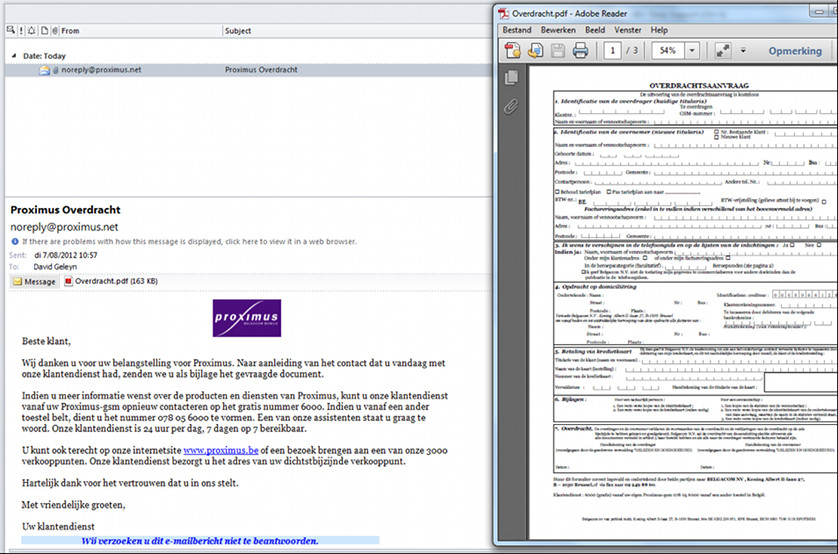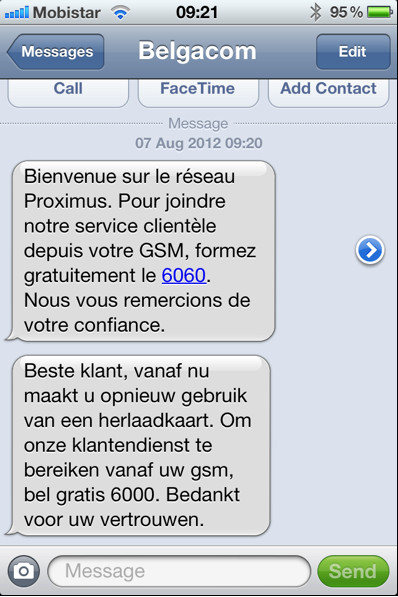Building a Personalized Communication Platform using Open Standards
Created by Nick Van den Bleeken / @nvdbleek / Inventive Designers
Agenda
- What is a Personalized Communication Platform?
- Which standards are used in the platform?
- What is its purpose in the platform?
- What extensions were required?
- What were the challenges?
- Which implementation is used?
- Conclusion
What is a Personalized Communication Platform?
Create unique and engaging communications


SMS


Labels

Have full overview of all communications
- What is sent when?
- Is it delivered/opened?
- Did the addressee interact with it and how?
All types of communications
- High-volume batch
- On-demand
- Interactive
Which standards are used in the platform?
Overview
- XML
- SCXML
- XQuery and XQuery update facility
- XSLT
- XSL-FO
- XForms
XML
- All data is XML
- Easily transformed, merged and enriched
- Pushed in the platform (folder drop, SOAP/REST endpoint)
- Pulled by the platform (XQuery, SOAP/REST call)

SCXML
SCXML code
<scxml xmlns="http://www.w3.org/2005/07/scxml" xmlns:my="http://scxml.example.com/"
version="1.0" initial="select-channel">
<datamodel>
<data id="communication.preference" expr="email" />
<data id="email.address" />
</datamodel>
<state id="select-channel">
<onentry>
<if cond="${communication.preference eq 'email' && not empty email.address}">
<transition target="email" />
<else>
<transition target="print" />
</else>
</if>
</onentry>
</state>
<state id="email" initial="mail">
<datamodel>
<data id="email.retrycount" expr="${-1}" />
</datamodel>
<state id="mail">
<onentry>
<my:channel type="mail" />
</onentry>
<transition event="channel.mail.success" target="sent" />
<transition event="channel.mail.error" target="print" />
</state>
<state id="sent">
<onentry>
<assign id="email.retrycount" expr="${email.retrycount + 1}" />
<send id="mailed-timer" event="'schedule.timeout.response-timer'"
delay="'2d'" />
</onentry>
<transition event="email.read" target="email-read" />
<transition event="email.hardbounce" target="print" />
<transition event="email.softbounce" target="soft-bounce" cond="${email.retrycount lte 3}" />
<transition event="email.softbounce" target="print" cond="${email.retrycount gt 3}" />
<transition event="schedule.timeout.response-timer"
target="print" />
<onexit>
<cancel sendid="mailed-timer" />
</onexit>
</state>
<state id="soft-bounce">
<onentry>
<send id="retry-timer" event="'email.retry'" delay="'12h'" />
</onentry>
<transition event="retry-timer" target="mail" />
<onexit>
<cancel sendid="retry-timer" />
</onexit>
</state>
<final id="email.read" />
<transition event="error" target="print" />
<transition event="done.state.email" target="exit" />
</state>
<state id="print">
<onentry>
<my:channel type="print" />
</onentry>
<transition target="exit" />
</state>
<final id="exit" />
</scxml>
SCXML extensions
- Custom action: 'Send Communication'
- Specify channel (print, e-mail, SMS, ...)
- Delivery intervals
- Expiration date
- Sends back status information as events
SCXML challenges
- State machines stay alive for weeks
- Implemented highly available event dispatcher:
- Clustering of multiple servers
- Automatic load balancing
SCXML implementation
- Apache commons SCXML
- Modifications:
- Custom action: 'Send Communication'
- Highly available event dispatcher
XQuery and XQuery update facility
- Retrieve personalization data
- Retrieve data for management UI
- Store runtime information about communication
XQuery sample queries
declare variable $sub-job-id as xs:string external;
declare variable $client-number as xs:string external;
declare variable $unit-status as xs:string external;
for $unit in /job/subJobs[@id = $sub-job-id]/unit
[(contains(lower-case(@client-number), lower-case($client-number))
and ($unit-status = 'all' or @status = $unit-status)]
order by $unit/@creation-date descending
return element unit {$unit/@* }
XQuery extensions
- None
XQuery challenges
- Customers prefer to store data in relational DB
- Work around database quirks (eg: empty string Oracle)
- One relational query for performance
- Ongoing effort to support more of the XQuery spec
- XQuery knowledge is not common
XQuery implementation
- Wrote our own with pluggable data store
- Relational database as back-end
- Currently a subset of the XQuery spec
XSLT
- Transform, merge and enrich personalization data
- Conditional structural formatting of content
Designer

XSLT extensions
- Custom function libraries (abstract complex expressions and business logic)
- Call other XSLT+XSL-FO stylesheets dynamically
XSLT challenges
- Memory consumption
- Streaming mode will make life easier
- Support streaming mode WYSIWYG XSL editor is challenging
XSLT implementation
- Saxon PE
XSL-FO
- Markup language for XML document formatting
- Citations and Cross-references
- Headers/footers
- Keep together, keep with next, keep with previous
- Orphans and widows
- Running totals
- Powerful conditional formatting in combination with XSLT
- 18 different output formats (PDF, PS, AFP, HTML5,...)
Example document

XSL-FO extensions
- Mix-in SVG, XForms and Open Office Charts
- Meta data (PDF annotations and TLE's in AFP)
- Finishing features (Duplex printing, input and output trays)
- Output specific features (AFP overlays)
- BarcodeML
- 'Page data'
XSL-FO challenges
- Performance, memory and quality requirements
- Small on-demand and large batch
- Nested tables which span hundreds of pages
- Repeated markup (XSLT/XSL-FO formatting is separate)
- Remove superfluous XSL-FO attributes
- Optionally: Attribute group references
XSL-FO implementation
- We created our own implementation
XForms
- Interactive documents and management UI
- Cross device (desktop and mobile)
- host language independent (XSL-FO and HTML)
- Model-view-controller
XForms extensions
- A lot which are standardized in XForms 2.0
- Custom components based on XBL
XForms challenges
- A lot of different web browsers with their own quirks
XForms implementation
- Chiba
- Orbeon
- Custom component support
- Clever performance optimizations
Conclusion
- The open standards and W3C membership ensured
- Future proof
- Easy to integrate with/in
- A lot of good documentation available
- Re-use of off-the-shelf components
- Prevent vendor lock-in
- Platforms is used today by enterprises worldwide